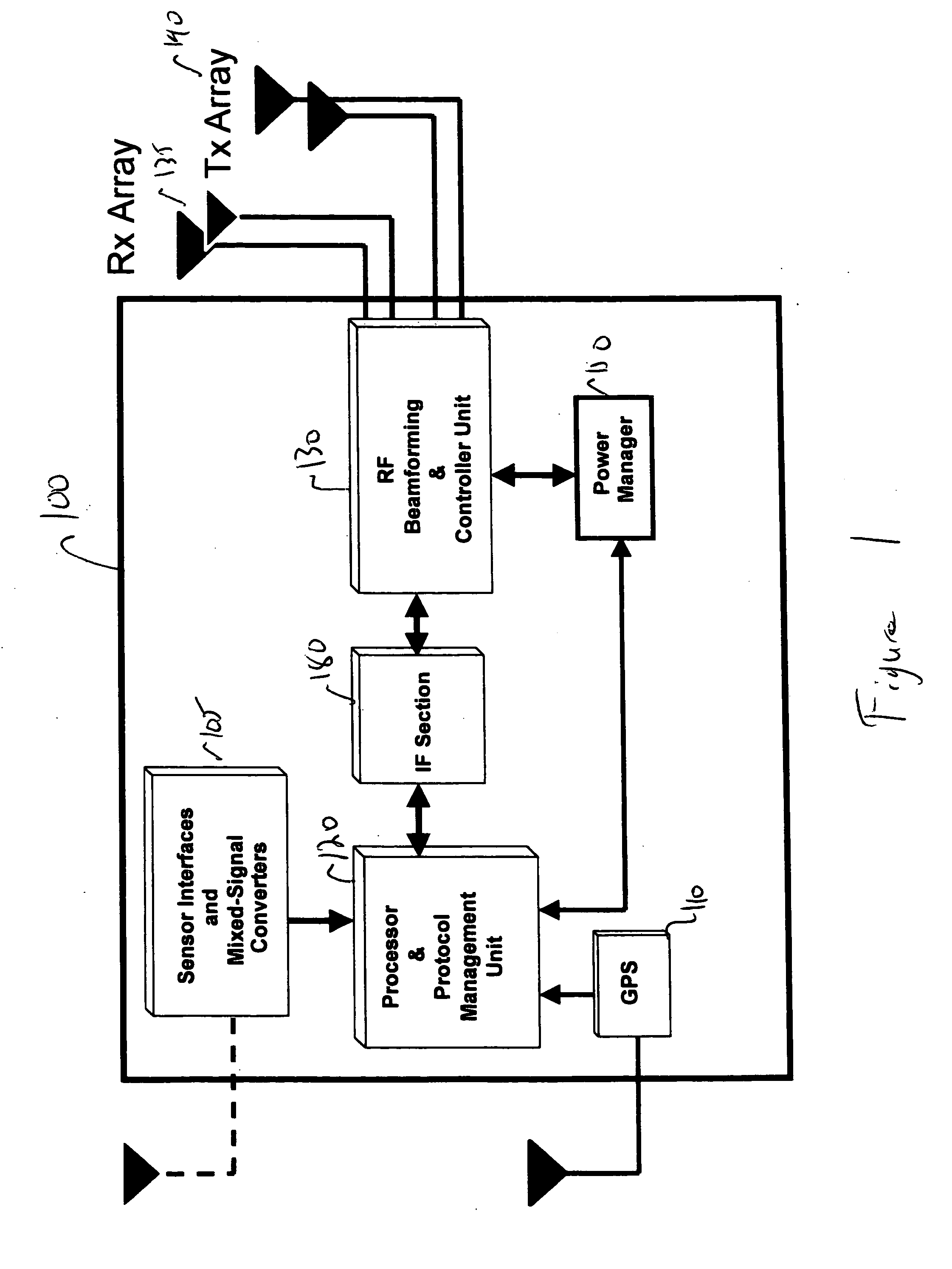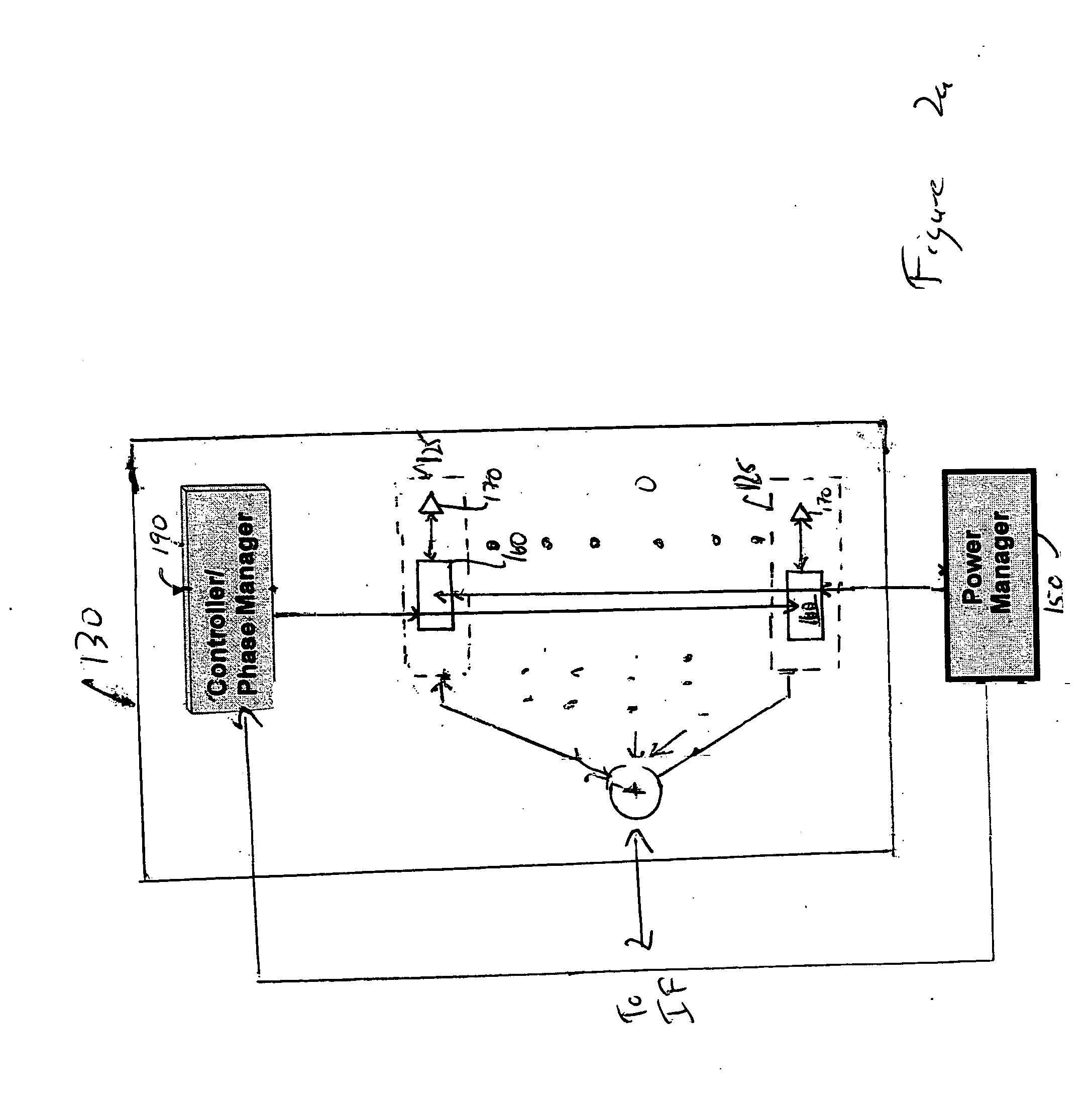Direct downlink RF module
a direct downlink and module technology, applied in the field of remote sensing, can solve the problems of difficult and expensive manufacture of structures, high-frequency antennas that are often cumbersome to manufacture, and require expensive micro-machining and hand-tuning
- Summary
- Abstract
- Description
- Claims
- Application Information
AI Technical Summary
Benefits of technology
Problems solved by technology
Method used
Image
Examples
Embodiment Construction
The present invention provides an RF downlink module having beam forming capabilities integrated onto a semiconductor substrate. This RF downlink module utilizes and expands upon the beam forming capabilities described in copending U.S. Ser. No. 10 / 423,303, filed Apr. 25, 2003, Ser. No. 10 / 423,106, filed Apr. 25, 2003, Ser. No. 10 / 422,907, filed Apr. 25, 2003, Ser. No. 10 / 423,129, filed Apr. 25, 2003, and Ser. No. 10 / 860,526, filed Jun. 3, 2004, the contents of all of which are hereby incorporated by reference in their entirety. A block diagram for an exemplary embodiment of an RF downlink module 100 is shown in FIG. 1. RF downlink module 100 includes sensor interfaces and analog-to-digital converters circuit 105. In general, RF downlink module 100 may be used to downlink information from any desired sensor, such as a thermal sensor, an electromagnetic sensor, an electrochemical sensor, or any other type of sensor that can sense energy or some sort and convert the sensed energy int...
PUM
 Login to View More
Login to View More Abstract
Description
Claims
Application Information
 Login to View More
Login to View More - R&D
- Intellectual Property
- Life Sciences
- Materials
- Tech Scout
- Unparalleled Data Quality
- Higher Quality Content
- 60% Fewer Hallucinations
Browse by: Latest US Patents, China's latest patents, Technical Efficacy Thesaurus, Application Domain, Technology Topic, Popular Technical Reports.
© 2025 PatSnap. All rights reserved.Legal|Privacy policy|Modern Slavery Act Transparency Statement|Sitemap|About US| Contact US: help@patsnap.com



